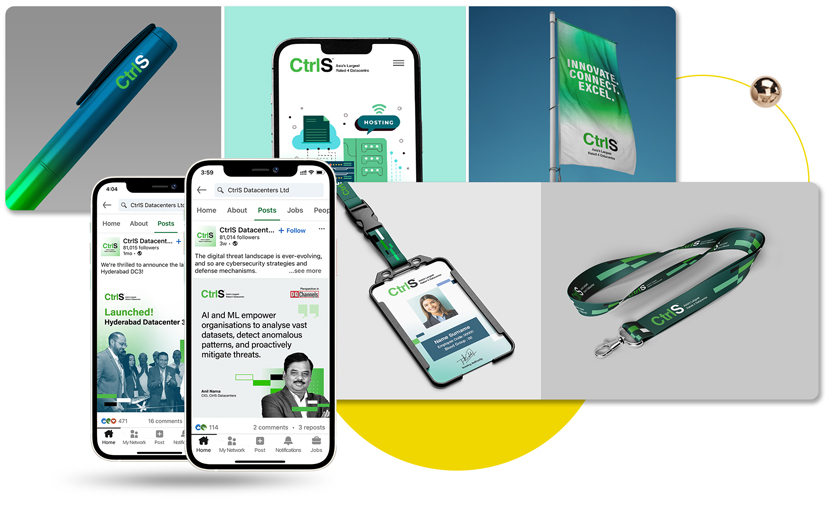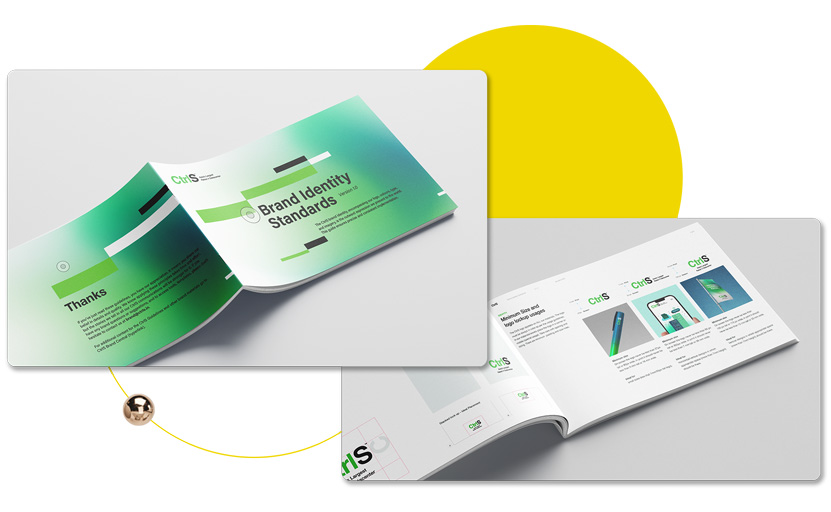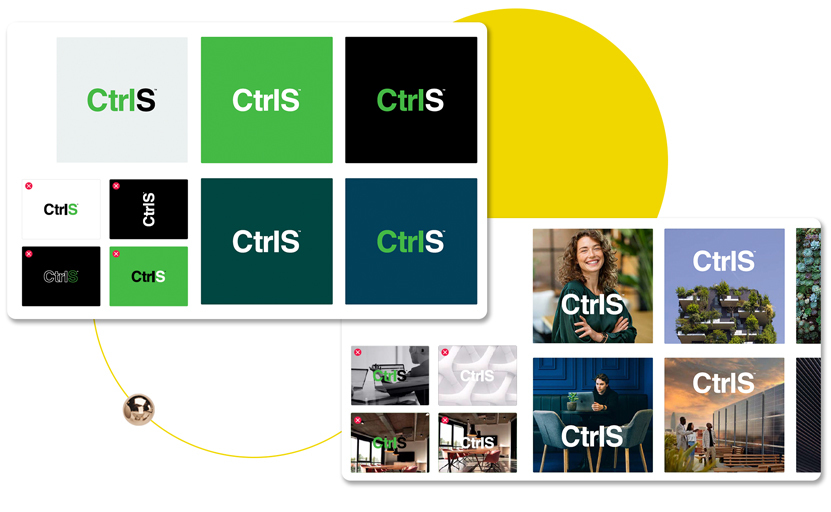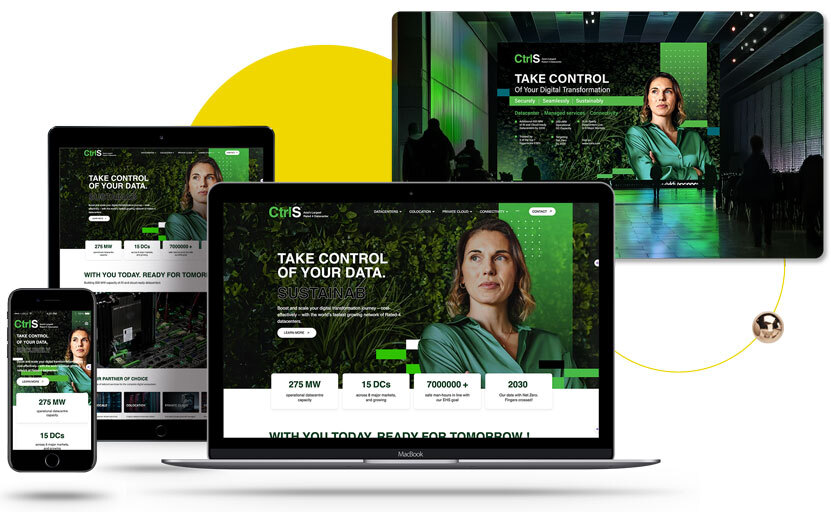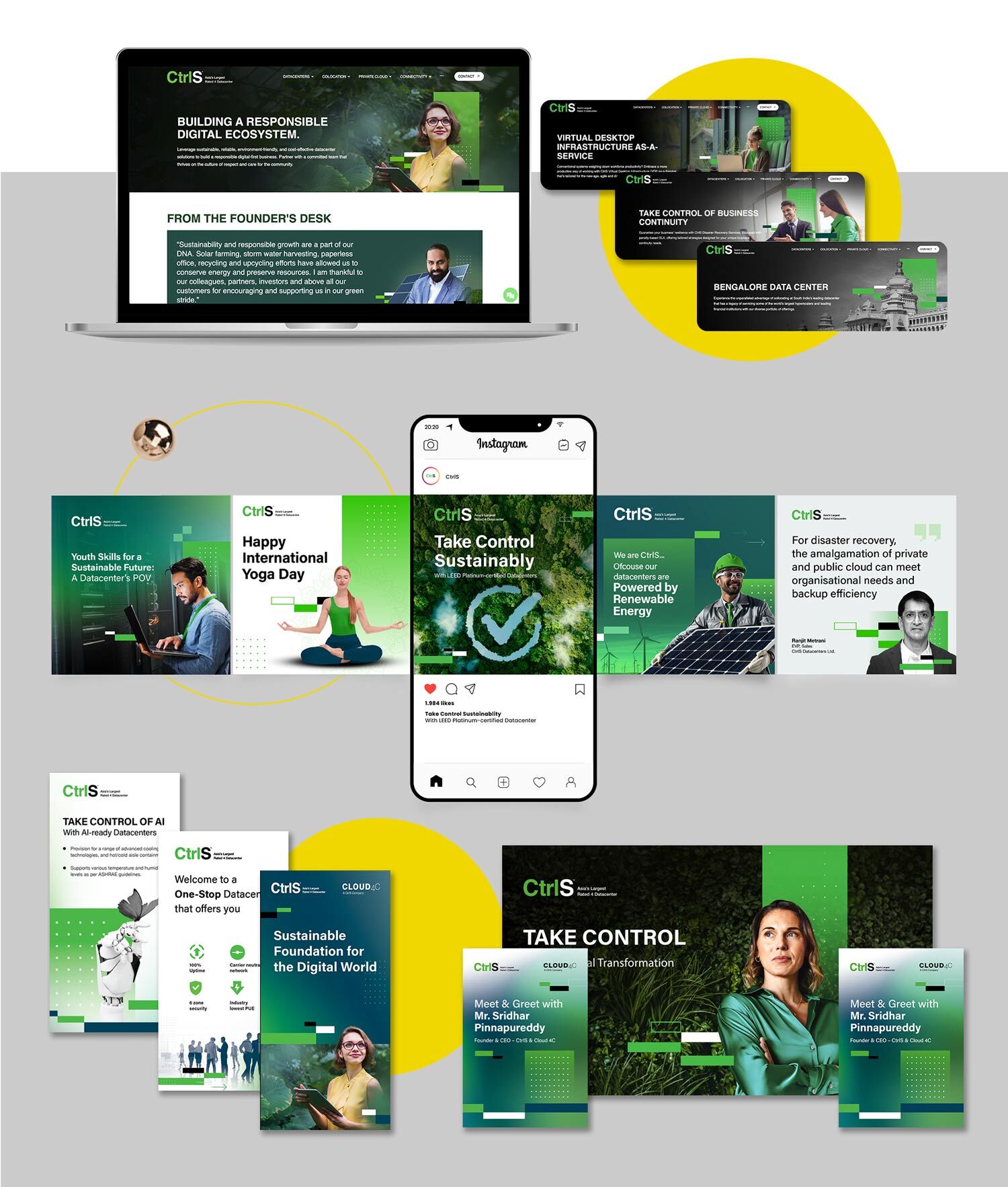Brand Audit and Discovery
Our journey began with an extensive brand audit, meticulously examining CtrlS's existing brand assets and their evolution over time. We engaged in in-depth conversations with key team members to uncover pain points, current practices, and the brand's historical development. This comprehensive discovery phase allowed us to identify inconsistencies, strengths, and areas for improvement within the brand ecosystem. By understanding the nuances of CtrlS's brand journey, we were able to pinpoint exactly where the refresh needed to focus, ensuring that our approach would address real challenges while preserving the core elements that had contributed to CtrlS's success. This foundational work set the stage for a strategic and targeted brand evolution.
Stakeholder Interviews and Periodic Briefing Sessions
Our process was deeply collaborative, beginning with a comprehensive briefing from the CtrlS team. We then conducted multiple rounds of individual and team meetings, each session peeling back layers of insight into the brand's essence. These interactions were crucial in understanding the vision and values held by key decision-makers and employees alike. Parallel to these discussions, we collected and analyzed a wide array of existing marketing assets, providing us with a tangible history of the brand's visual journey.
Brand Strategy Development
Our approach to CtrlS's brand strategy development was comprehensive and nuanced. We began by defining the brand's positioning, carefully considering CtrlS's current market leadership and its ambitions for the future. This process involved a deep dive into the brand's personality, distilling its unique attributes to craft core messaging that would resonate with both existing and potential clients. We refined CtrlS's elevator pitch, ensuring it succinctly communicated the brand's value proposition and market differentiation.
Simultaneously, we developed a robust brand architecture that clearly defined the relationship between CtrlS's various services and sub-brands, creating a cohesive structure that could accommodate future growth and expansion. This strategic foundation served as the north star for all subsequent creative and communication efforts, ensuring a unified and powerful brand presence.

Defining Brand Essence and Brand Personality
We identified the core principles that defined CtrlS and what they hoped to achieve with their data center solutions and services portfolio. We leveraged an empathy map to recognize brand attributes that could be considered the driving force of our ‘stylescape’ and visual decision-making.
However, identifying attributes was just one part of the process. The problematic part was assigning weightage to the characteristics to create a comprehensive ‘mind map’ that provided meaningful guidance on the creative process and set a firm foundation for a cohesive visual representation of the brand.
Creating Visual Identity System Based for New Brand Archetype & Positioning
Photography brings a relatable and personal element to the brand and reflects its archetype. The brand guidelines include using proper photography that integrates brand colors and wherein the photographs are in deep synergy with the audience's expectations—empathetic photography.
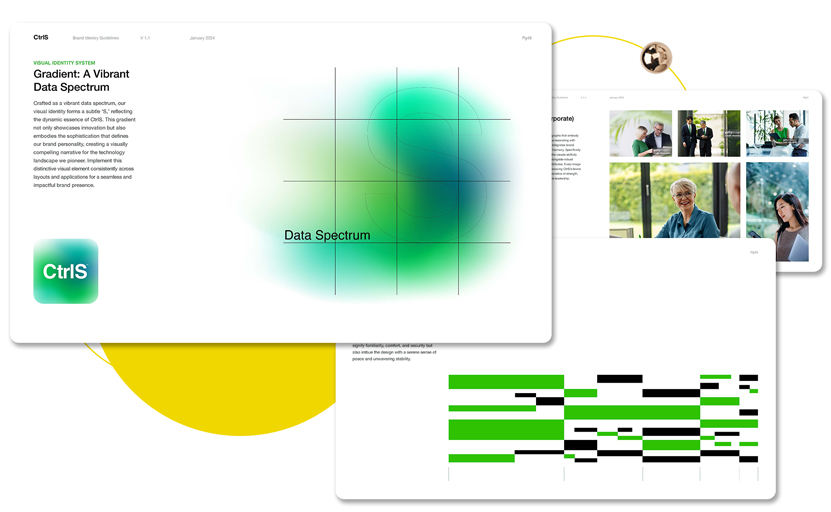
Salient features
- Open spacing and minimalist looks inspire confidence
- Rounded shapes and lowercase humanize and make it more engaging
- Refined curvature indicates innovation and a progressive attitude

The Logo Color
We fine tuned the logo color, with the primary logo applied to a white background and a white logo applied to dark backgrounds. Such placement made the logo more legible and helped it stand out from other page elements, thus reinforcing the CtrlS brand identity.
The Color Palette
The focus of attention was a distinct color palette comprising both primary and secondary colors, clearly defining their specific usage. Pantone colors were considered ideal for all print applications, while saturated colors can highlight the UI and infuse more meaning into the layout. We also provided concrete guidance on using color to highlight the brand better, mainly how brand colors can be reflected in the images used.

Typography and Visual Patterns
Helveticans mapped brand attributes against the right fonts and chose primary and secondary fonts that exuded understated sophistication. The focus was on leveraging fonts that offered usage flexibility across all brand communications and looked professional. Another area of guidance was working out a typographic hierarchy for font usage in ‘Headlines, ‘Sub Headlines,’ and ‘Body Copy.’
Illustration and Iconography that Drive Forward-Looking Narratives
Using suitable illustrations can make or break content. Still, every illustration leveraged by CtrlS has to be distinct from one another, relatable to the brand identity, and have a commonality that drives brand recall.
When it comes to icons, CtrlS icons are unique and purposefully created to represent the brand’s adherence to a simple yet impactful visual language corresponding to its innate values. A perfect confluence of illustrations and icons delivers a meaningful narrative.
Managing the Layered Feedback Process
We created a brand refresh document that covered all brand elements and highlighted their needs comprehensively. We also made a ‘Stylescape’ document that fleshed out every aspect of the brand element and showed how they contribute to building a brand identity. The development of each component was time bound and up for discussion at all times, with a cut-off date.
Creating Collaterals
When enough brand elements were green-lit and we had a cohesive visual identity system, we began work on CtrlS collaterals, incorporating the new brand guidelines. The work on the brand guidelines document kept happening in the background, and as new elements were defined and agreed upon, they flowed seamlessly into the collaterals.
